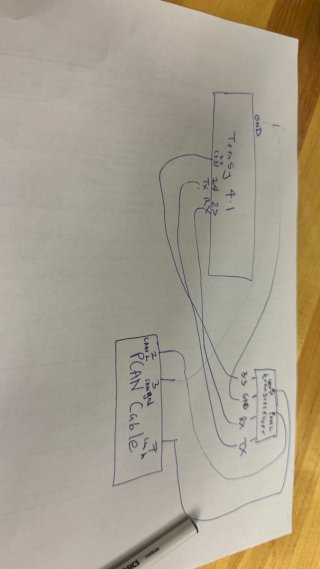Tenebrae0o
New member
@skpang @msadie
Oh my god... Thank you so much you two. I feel really dumb for making such a mistake!
I cant believe it was something so simple.
I was searching for this for ages and couldnt find the sollution. I was almost sure, that I had a problem with the hardware at the end and didnt even think that it was an issue with the clock settings.
I made a mistake with the termination. I am using 120Ohms on both sides so that should be fine. But I really didnt think about the clock settings beeing to HIGH so that I can not achieve slower CANFD rates.
I was sure that the clock settings I was using would work as the PEAK Bit Rate Tool was giving me timing options for 80MHz 500K nominal rate and 2M data rate and I imagined I could just use the same setting on the PEAK device as well as on the Teensy but looks like I was mistaken.
That shows that maybe I should test around with different clock settings before diving to deep into the documentation of the hardware.
Now I just need to test and see if I can achieve higher bit rates as well.
Oh my god... Thank you so much you two. I feel really dumb for making such a mistake!
I cant believe it was something so simple.
I was searching for this for ages and couldnt find the sollution. I was almost sure, that I had a problem with the hardware at the end and didnt even think that it was an issue with the clock settings.
I made a mistake with the termination. I am using 120Ohms on both sides so that should be fine. But I really didnt think about the clock settings beeing to HIGH so that I can not achieve slower CANFD rates.
I was sure that the clock settings I was using would work as the PEAK Bit Rate Tool was giving me timing options for 80MHz 500K nominal rate and 2M data rate and I imagined I could just use the same setting on the PEAK device as well as on the Teensy but looks like I was mistaken.
That shows that maybe I should test around with different clock settings before diving to deep into the documentation of the hardware.
Now I just need to test and see if I can achieve higher bit rates as well.



